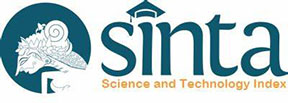Characterization and Test of Endophytic Bacterial Isolates to Control Leaf Blight on Acacia Seeds (Acacia crassicarpa)
DOI:
https://doi.org/10.32734/jopt.v9i1.8656Keywords:
acacia, characterization, endophytic bacteria, in vitro, in vivo, Xanthomonas sp.Abstract
ABSTRACT
Acacia is a type of plant that recommended for development of industrial forest plantations (HTI) especially pulp and paper. According to Central Statistics Agency (2020), area of ​​​​acacia HTI in Riau Province 2019 was 2,335,450 ha with a log output of 31,509,228m3 and total pulp export of 2,952.4 million US dollars. The need for paper pulp has increased every year. Problems in acacia nursery area is presence of disease caused by Xanthomonas sp. Bacterial leaf blight causes significant losses in procurement of acacia seedlings, so we need an alternative control with environmentally friendly and sustainable by utilizing potential of biological agents in controlling leaf blight. This aimed to study potential of endophytic bacterial isolates against bacterial pathogen Xanthomonas sp. by adopting a Completely Randomized Design (CRD). The results showed that there were 9 isolates of endophytic bacteria that had inhibitory power against Xanthomonas sp., bacterial isolates in hypersensitivity test did not show symptoms of necrosis in tobacco leaves, results of physiological and biochemical tests on levan test and VP test showed differences in reaction results on tested endophytic bacteria isolates and it was found isolate of endophytic bacteria B8 was effective as an antagonist agent in controlling disease.
Keywords: acacia; characterization; endophytic bacteria; in vitro; in vivo; Xanthomonas sp.
Downloads
References
Agustiansyah, S. Ilyas, Sudarsono, M. Machmud. 2013a. Characterization of rhizobacteria that have the potential to control Xanthomonas oryzae pv. oryzae and increase the growth of rice plants. J. Tropical HPT.13:42-51.
Alfian, AYDP 2008. Isolation and Identification of Endophytic Bacteria in the Stem of Artmesia Annua,L. Tested for Antibacterial Potential against Escherecia coli and Staphylococcus aureus. Thesis.(Unpublished). Sanata Dharma University. Yogyakarta.
Asadullah M (2014) Isolation of Amylolytic Bacteria from Rice bran and Ability Test for Production of Coarse Amylase Enzyme in Various Types of Production Media. Essay. Faculty of Science and Technology UIN. Poor.
Asrul, Arwiyanto, T., Maryudani. 2004. Effect of treatment of tomato seeds with Pseudomonas putida pf-20 on bacterial wilt disease (Ralstonia solanacearum). Agroscience 17(3): 419-430
Central Bureau of Statistics. 2020. Statistics of Indonesia's Foreign Trade According to ISIC Code 2018-2019. BPS. Jakarta.
De Ley and Swings J., (1976), “Phenotype description, numerical analysis and a proposal for an improved taxonomy and nomenclature of the genus Zymomonas Kluvyer and Van Nielâ€, International Sys. Bacteriology, no. 26, p. 146-157.
Eliza., Munif A., Djatnika I., and Widodo. 2007. Physiological Characters and Role of Antibiosis of Graminae Root Bacteria on Fusarium and Banana Plant Growth Stimulator. Journalof Horticulture 17(2):150-160.
Evita, CT2005. Organic Waste Degrading Bacteria at the Padang City Cold Water Final Disposal Site. ESSAY. Andalas University. field
Fahy PC and Hayward AC. 1983. Media and methods for isolation and diagnostic tests. In: Fahy PC & Persley GJ (Eds.) Plant Bacterial Diseases. A Diagnostic Guide. pp. 337–378. Academic Press.
Fithriyah, NL (2015). Isolation And Identification Of Endophytic Bacteria From Kebar Grass (Biophytum sp.) As Producing Antibacterial Compounds Against E.coli And S.aureus. Essay. Faculty of Science and Technology. Maulana Malik Ibrahim State Islamic University. Poor.
Gusmaini, D. Sopandie, SA Aziz, A. Munif, and N. Bermawie. 2013. The Potential of Endophytic Bacteria in Increasing Growth, Production and Levels of Androgrfolids in Sambalito Plants. Journal of Littri, 19(4):167-177.
Halaman, J. 2001. Plant interaction with endophytic bacteria. Biotic interactions in plant-pathogen associations. CAB International. pp 87-119.
Harni.R., and MSDIbrahim. 2011. The potential for endophytic bacteria to induce resistance of pepper plants to Meloidogyne incognita. Research Institute for Spices and Various Industrial Plants. Journal of Littri 17 : 118 – 123.
Hasim. 2003. Planting Grass, Harvesting Antibiotics. Jakarta : Kompas No. 127. The 39th year
Jewetz, E., Melnick, Joseph L., Adelberg, EA 2010. Medical Microbiology. New York: McGraw Hill Companies.
Johnson, TR, and Case, CL 2010. Laboratory Experiments in Microbiology 9 th edition. Pearson Benjamin Cummings, San Francisco. Page. 25.
Lay, B. 1994. Microbial Analysis in the Laboratory. 79-101, 129-132. Management of PT. Grafindo Persada. Jakarta.
Lelliott, R.A. and DE. Stead. 1987. Methods in Plant Pathology. Vol. II. Method for the Diagnosis of Bacterial Diseases of Plants,. Blackwell Scientific Publications. Oxford. London. Edinburgh.
Marwan, Husda, SS Meity, Giyanto and NAAbdjad. 2011. Isolation and selection of endophytic bacteria to control blood disease in banana plants. J. Tropical HPT. Vol. 1, No. 2:13-121.
Munif A, Wiyono S, Suwarno. 2012. Isolation of endophytic bacteria from upland rice plants and their potential as biocontrol agents and plant growth promoters. J Fitopatol Indonesia 8 (3):57-64.
Ningtyas, AIL, 2016, Differences in Concentration and Antibacterial Activity Test of Kluthuk Banana Stem Ethanolic Extract (Musa balbisiana Colla.) Against Staphylococcus aureus and Pseudomonas aeruginosa, FMIPA Sebelas Maret University, Surakarta
Pelczar, Michael J and Chan, ECS 2007. Fundamentals of Microbiology Volume I. Jakarta: UI Press.
Pricilia S, Astuti W, Marliana E (2018) Screening of Amylase, Lipase and Protease Producing Endophytic Bacteria from Macaranga hullettii King leaves ex Hook.f. Atomic Journal 3(2) : 102-105.
Rajendran, L., D. Saravana Kumar, T. Ragunchander, R. Samiyappan. 2006. Endophytic Bacteria Induction Of Defense Enzymes Against Bacterial Blight Of Cotton. Tamil Nadu (IN): Tamil Nadu.
Resti, Z., T. Habazar, DP. Son and Nasrun. 2013. Screening and identification of endophytic bacterial isolates to control bacterial leaf blight on shallots. J HPT Tropical. 13(2):167–178.
Ryan RP, Germaine K, Franks A, Ryan DJ, Dowling DN. 2008. Bacterial endophytes: recent developments and applications. FEMS Microbiol Lett. 278:1-9.
Sariyanto.N., 2006. Exploration of Antagonist Agents Potentially Suppressing Fusarium Wilt Disease in Bananas. (Essay). Pest and Plant Disease Study Program, Faculty of Agriculture, Bogor Agricultural University
Stolp, H and D. Gadgari. 1983. Nonpathogenic Members of the Genus Pseudomonas. P. 719-741 in The Prokaryotes A Handbook on Habitat edited by Star, MP, HG Truper, A. Balows, and HG Schlegel. Springer-Verlag New York.
Strobel G and B. Daisy. 2003. Bioprospecting for microbial endophytes and their natural products. Journal of Microbiology and Molecular Biology Review. 67(4).
SU, YH, YB LIU, and XS ZANG. 2011. Auxin-cytokinin interaction regulates meristem development. mole. Plants. 28:1-10.
Sunatmo IT. 2007. Microbiological Experiments in the Laboratory. Jakarta: Ardy Agency.
Surette MA, Stunz AV, Lara RR & Nowak J. 2003. Bacterial endophytes in processing carrots (Ducus carota L. Var. Satvus): their localization, population density, biodiversity and their effects on plant growth. P. soil. 253:381-390.
Surya Murthi, R. Lisnawita, Syahrial Oemry. 2015. The Potential of Endophytic Bacteria to Increase Growth of Tobacco Plants Infected with Root Claw Nematodes (Meloidogyne spp.). Journal of Agroecotechnology . E-ISSN No. 2337- 6597 Vol.4. No.1, December 2015. (583) :1881-1889
Wahyudi TA, Meliah S, Nawangsih AA. 2011. Xanthomonas oryzae pv. Oryzae bacteria causing leaf blight in rice: Isolation, Characteristics, and Study of Mutagenesis with Transposon. Makara Sains, 15(1): 89-96.
Yulianti, Titiek. 2013. Utilization of endophytes as biological control agents of plant pests and diseases. Bulletin of tobacco, fiber and industrial oil crops. 5(1): 40-49.
Downloads
Published
How to Cite
Issue
Section
License
Copyright (c) 2022 Jurnal Pertanian Tropik

This work is licensed under a Creative Commons Attribution-ShareAlike 4.0 International License.






















